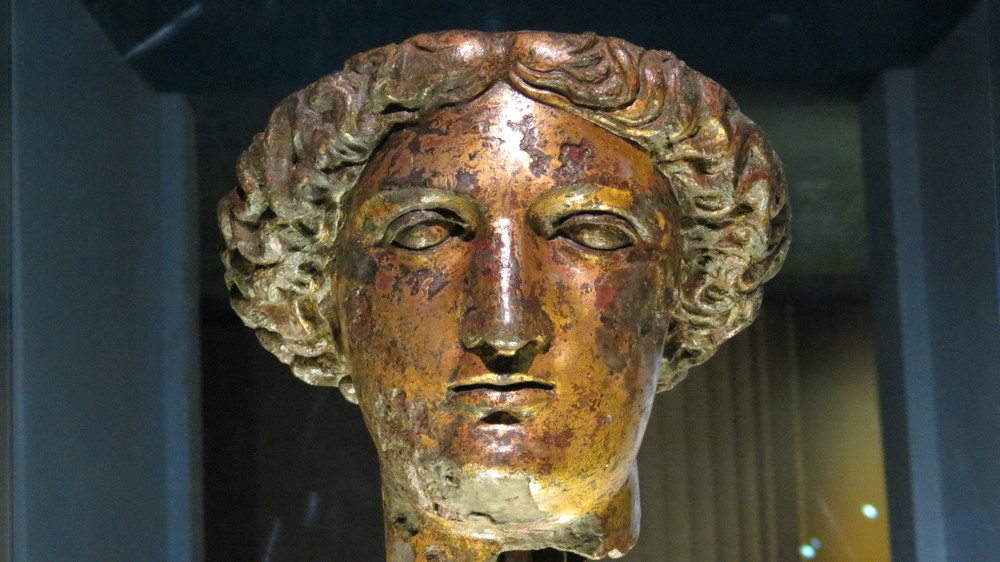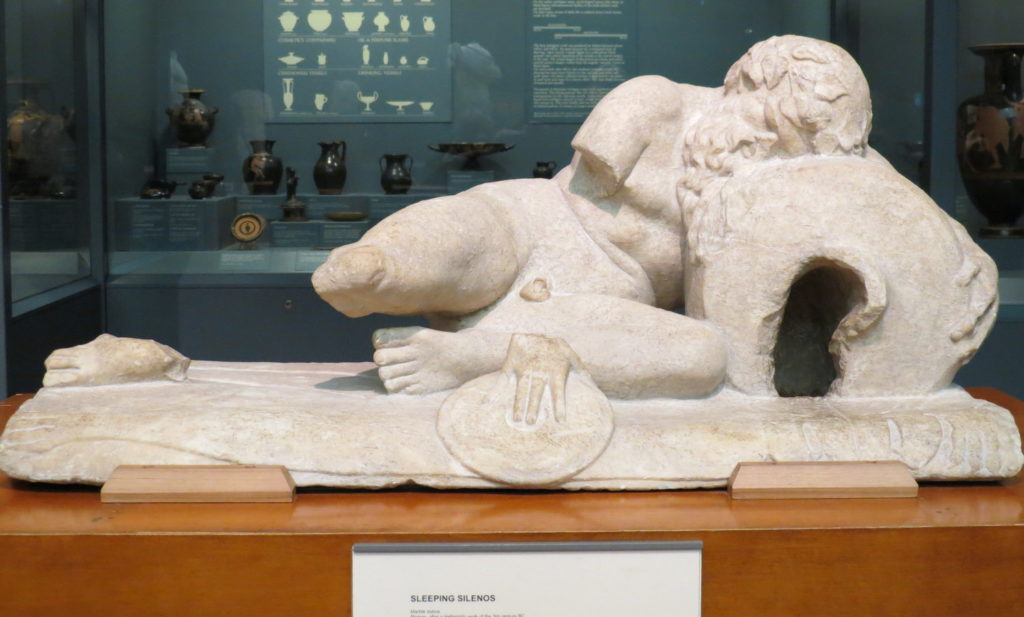Today I’d like to talk about the Gospel of Mark.
As I mentioned above in my March 3, 2010 post, I think one of the biggest challenges facing the church in the third millennium is our theology. We believe our theology is an honest representation of what Jesus taught. Because we believe this, we don’t want to challenge our theological doctrines and beliefs. If it was good enough for Jesus, then it’s good enough for us, goes the thinking. And who can blame Christians for wanting to hang onto the teachings that Jesus taught? After all, isn’t that the point?
For me, it’s definitely the point. I discovered to my dismay, however, that what Protestant theology classes teach in Canada in the third millennium is Paul’s theology, not Jesus’ theology.
We’re so used to thinking that Paul was a faithful believer in Jesus that few Christians until recently have examined the gulf that exists between the teachings of Paul and the teachings of Jesus. If you want to read an exploration of the differences between Paul’s Christ Movement and James’ Jesus Movement, I recommend professor Barrie Wilson’s book How Jesus Became Christian (Toronto: Random House Canada, 2008). Wilson bluntly shows that Paul was trying to found a new religious movement that was in competition with the early Jesus Movement of Palestine. Further, Wilson shows how the author of the Gospel of Luke and the Acts of the Apostles wrote these two books to bridge the gulf between the two religious movements, and make them seem like a unified religion. But they’re not. And they never were.
Why do I agree with Wilson? I agree with Wilson because I’ve studied what I believe to be the earliest layer of writings based on the teachings of Jesus, and when I compare what’s contained in this early layer with what’s contained in Paul’s uncontested letters, I see almost no theological similarities.
For the record, I believe the earliest layer of writings based on Jesus’ teachings to be (1) the parts of the letter of James that Jesus himself wrote (I’ll come back to that in a later post); (2) the parables and anecdotes written down by the beloved disciple Lazarus in the earliest version of the”Q” source (again, food for future thought); (3) the sayings written down by the apostle John in his unattributed “proto-Gnostic” Gospel of Thomas; and (4) the Gospel of Mark.
Of these early writings, the Gospel of Mark would have been written last, about 30-35 years after Jesus’ death, by a person we call Mark. We don’t know much about this fellow Mark except that he was brave enough to write a radical theological statement in Judea during the dangerous and tumultuous decade of the 60’s when Jews were fighting Jews, and Jews were also fighting Romans.

This fish plate, with a small cup in the centre (probably for sauce) comes from the Roman Campania and is dated 330-300 BCE. (This plate is on display at the Royal Ontario Museum, photo credit JAT 2017.)
Most New Testament scholars who analyse the different books of early Christianity will tell you they subscribe to the theory of “Markan Priority.” This is the theory that states that Mark was written before either Matthew or Luke, and that the authors of Matthew and Luke both used a “cut and paste” approach to Mark’s narrative by cutting out sections of Mark’s book, rearranging and changing those sections, and adding their own material. If you want to learn more about this fascinating bit of biblical history, I recommend the recent book by Pheme Perkins: Pheme Perkins, Introduction to the Synoptic Gospels (Grand Rapids, MI: Eerdmans, 2007). She provides a readable introduction to the main threads of scholarly research that every serious New Testament inquirer needs to know about.
(I didn’t find out about Perkins’s book until the second year of my graduate studies. I really wish I’d had it on Day 1. It would have saved me a lot of initial confusion!)
A lot of scholars and ministers don’t like the Gospel of Mark. (My New Testament professor, for one, doesn’t like Mark.) People think it’s too blunt and choppy. Fans of Luke, whose use of Koine Greek is more sophisticated, complain that Mark isn’t a very good writer. Others dislike the Christology of Mark. In Mark, Jesus is a confusing fellow. The apostles are confusing fellows. Jesus’ family members are confusing. Jesus’ female followers are confusing. The original ending of Mark at 16:8 is confusing. The Gospel of Mark is downright confusing if you’re looking for biblical evidence that conforms to orthodox Western Christian beliefs about Jesus.
Here’s a thought: maybe the Gospel of Mark is confusing because people have been shoehorning it into Paul’s theology, and have forced Mark to say something about Jesus that Mark himself wasn’t saying.
Maybe in the church of the third millennium we should allow Mark to tell us what he’s been saying all along.
Maybe we should be honest about the fact that Mark’s Jesus is a Jewish Messiah — a very human teacher and healer — not a Saviour, as in Paul.
Maybe we should be honest about the fact that Mark’s Jesus is not a monotheistic Jew, who believes only in God the Father, but is instead a quasi-monotheistic Jew who believes in both God the Father (Abba) and God the Mother (Ruah, Spirit, Holy Dove).
Maybe we should be honest about the fact that Mark’s Jesus is not a wandering Cynic philosopher, nor an apocalyptic prophet, nor an illiterate Jewish carpenter. There’s a great deal of proof in Mark to indicate that Jesus came from a wealthy, literate family. Jesus was a physician-scholar.
Maybe we should be honest about the fact that Mark’s narrative shows a sophisticated understanding of psychodynamics. Mark’s cast of characters behave in realistic, believable ways. He doesn’t pretend that Jesus’ students liked or appreciated his teachings. He doesn’t pretend that Jesus’ family liked or appreciated his teachings. Mark tells the painful truth, because the truth was painful.
Mark’s biography of Jesus is short (relative to other biographies of the time, including those written by Matthew and Luke) for two reasons: (1) he assumed his biography would be read in conjunction with the parables and anecdotes contained in “Q,” and (2) he wrote his narrative with the intention of creating a long parable of the kingdom.
(These two points are my own thesis.)
The first point has more evidence to support it, since scholars have been working hard to reconstruct the contents of the early “Q” source, and they’ve already shown the links among Q, Mark, and the later gospels of Matthew and Luke. There is every reason to suppose that Q was circulating in Judea at the time Mark’s gospel was written.
The second point has arisen through my own work as both an academic researcher and a mystic. It’s my contention that Mark understood what many have failed to understand about Jesus’ teaching parables: the long kingdom parables, most of which probably originated in “Q” and were later cut-and-pasted into Matthew and Luke, only make sense when you listen with all your heart, all your mind, all your soul, and all your strength to Jesus’ message about God (Mark 12:28-34). If you listen only with your mind, you won’t get it. If you listen only with your mind, and reject the input of your heart and your soul, the parables are almost gibberish. They’re illogical. They’re contrary to accepted wisdom. They don’t seem to be wisdom teachings at all. Therefore, they’re easily dismissed by those who’ve placed their bets on traditional wisdom.
Through the medium of a long parable, a teacher can say a lot of harsh things about other people’s religious beliefs, and not get caught. Jesus’ long kingdom parables hide the truth about God in plain sight.
This isn’t the same approach as the early Gnostics took. The early Gnostics believed in the existence of hidden, esoteric knowledge that could only be revealed to specially chosen initiates. They sometimes took steps in their writings to conceal their esoteric knowledge through the use of symbolism.
Jesus took no such steps. He wasn’t interested in hiding the knowledge, or making a “special club” of apostles to whom he would reveal his special secrets. He was forthright in his teachings about a loving Mother God and Father God who are not transcendent. (In Plato and in Paul, God was transcendent). A Mother Father God who are not unemotional. (In Plato and in Paul, God was detached from emotions like agape and forgiveness). A Mother Father God who are not pure Mind. (In Plato and in Stoicism, the Divine was pure Mind). A Mother Father God who do not choose some humans over other humans. (In most religions in Jesus’ time, Jewish and otherwise, the gods or God chose certain people or groups over other people). A Mother Father God who reject the pursuit of status addiction as the driving force of a loving human community (in dramatic contrast to the honour-shame values of Mediterranean culture in the 1st century CE). A Mother Father God who teach inclusive, egalitarian, relationship-oriented community life as the model for spiritual living.
These teachings are evident throughout Mark. But these teachings, then as now, were not popular with religious folk who wanted their religious accomplishments to raise them above their peers, to give them more status than others had, to take status away from others — to reveal how to climb the ladder of spiritual ascent.
This ladder of spiritual ascent was the darling of Plato and his many Platonic, middle Platonic, and NeoPlatonic followers, including orthodox Christians, who, from the time of Paul onward, have had a profound love affair with the doctrine of spiritual ascent — the belief that we have to climb the spiritual ladder one rung at a time to get closer to the Divine.
You have to remember here that Plato wrote about 400 years before Jesus. Plato’s idea of spiritual ascent was well known and deeply embraced by the Greco-Roman culture in which Mark wrote his breathtakingly radical book. So when Mark wrote a biography about a spiritual leader who rejected ascent, and instead embraced a horizontal path of service, Mark was pushing against the currents of his time.
When you carefully read Mark 9:2-9 — the Transfiguration — you’ll see that not only does Jesus reject the offer of staying on the “holy mount” and living in a tent there, but he comes down from the mountain and immediately makes himself religiously “impure” by touching and healing a boy who has epilepsy — a boy who in first century Palestine would have been seen as either “unclean” or as “marked by the gods” in the eyes of both pious Jews and Gentiles, a boy who would have been rejected and ostracized by people of status.
Mark’s Jesus is a human physician, trained in Torah, who thinks compassion, inclusiveness, courage, healing, forgiveness, agape, and service are the path to knowing God the Mother and God the Father.
Mark’s Jesus is a radical dude.
This topic is so big that one or more books could be written on it. I’ve barely scratched the surface here. But I wanted to introduce the idea that the Protestant church of the third millennium has some options open to it. One of these options is to courageously alter the theology we teach. We can alter our theological doctrines to better reflect what Jesus taught, and still have a biblical foundation for that teaching. We can reappraise Paul, and we can reappraise the earliest layer of writings based on Jesus’ teachings. We can reclaim the kergyma, or early teachings, of Jesus. We can have a church founded on teachings about our communal relationship with God the Mother and God the Father.
We can at last allow ourselves to accept the wondrous gift of God’s love.
Happy Easter Sunday to you!
Posted in
anagogic mysticism,
Church of today,
Concinnate Christianity,
Gospel of Mark,
Gospel of Thomas,
Letter of James,
Mark (Jesus' great nephew),
Mark vs Paul,
Matthew's and Luke's intent,
parables,
Paul vs Jesus,
Plato,
spiritual ascent and tagged
Jesus vs Paul,
Mark vs Paul |





















































